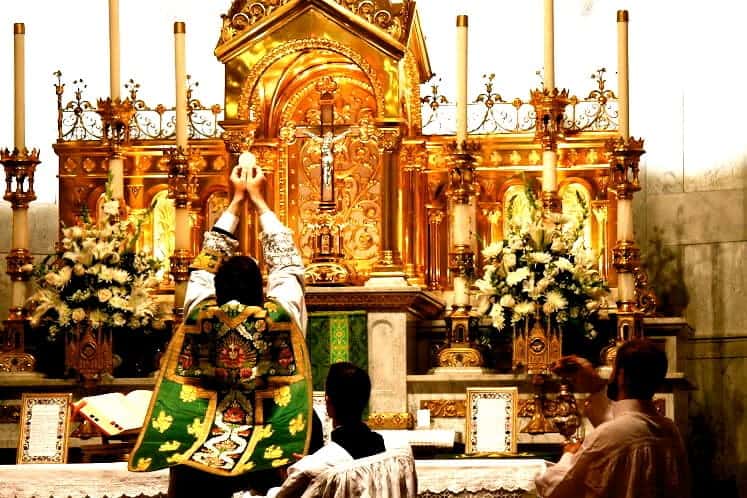In his book, The Spirit of the Liturgy, Pope Emeritus Benedict XVI touches on three critical “innovations” in worship that set early Christian worship apart from that which took place in the Jewish synagogue. These are:
1. the direction of public and private prayer (east instead of toward the Temple in Jerusalem)
2. the altar within the Holy of Holies
3. the replacement of the Torah with the Gospels
Because of its relevance for Catholic liturgy, I would like to cull some select passages that touch on the first point, the common direction of prayer in early Christian churches.
The Temple built of stone has ceased to express the hope of Christians; its curtain is torn forever. Christians look toward the east, the rising sun. This is not a case of Christians worshipping the sun but of the cosmos speaking of Christ. … The east supersedes the Jerusalem Temple as a symbol. Christ, represented by the sun, is the place of the Shekinah, the true throne of the living God. In the Incarnation, human nature truly becomes the throne and seat of God. … In the early Church, prayer toward the east was regarded as an apostolic tradition. … it is certain that it goes back to the earliest times and was always regarded as an essential characteristic of Christian liturgy (and indeed of private prayer). …
Praying toward the east means going to meet the coming Christ. … That is why, wherever possible, we should definitely take up again the apostolic tradition of facing the east, both in the building of churches and in the celebration of liturgy.
(Emphasis added.)
Game. Set. Match. This book should be required reading for every Catholic. Priests have no excuse.
I can’t tell you how many times I’ve heard well-intentioned Catholics derisively refer to the traditional orientation of liturgical prayer as the priest “turning his back to the people”. How dare he! The narrative is as follows: clerical elitism and dark ages yesterday, clerical inclusivity and enlightenment today. Now that the priest faces the people, we’re all in this together, and no one’s feelings are hurt. After reading the Holy Father’s brilliant observations, such narrow explanations ring hollow.
The emphasis and force of Benedict’s words, relying on phrases like “apostolic tradition” and “essential characteristic”, should indicate to us that the priest facing east (ad orientem) in liturgy, instead of facing the people (versus populum), is not just the liturgical equivalent of preferring vanilla over chocolate. You know, “You say ‘orientem’ and I say ‘populum’, let’s call the whole thing off.” Not quite.
Later in the book, he goes on to explain how unity is better served and symbolized, not with the “self-enclosed circle” of the priest facing the people, but with everyone, priest and laity, facing a common direction together. At the very least, he insists, where facing east on the part of the priest is not feasible, a crucifix placed front and center on the altar, which can serve as a “liturgical east”, should be present. But at most parishes I’ve seen, it would not be difficult, logistically speaking, for the priest to simply revert to the ancient manner. Resistance to prayer ad orientem is not really a matter of practicality, but rather of ideology.
Let’s pray for a return to this venerable, ancient tradition of facing east at all Catholic parishes. In the meantime, it wouldn’t hurt to bring Benedict’s liturgical reflections to your parish priest’s attention. “One parish at a time” is our maxim.


